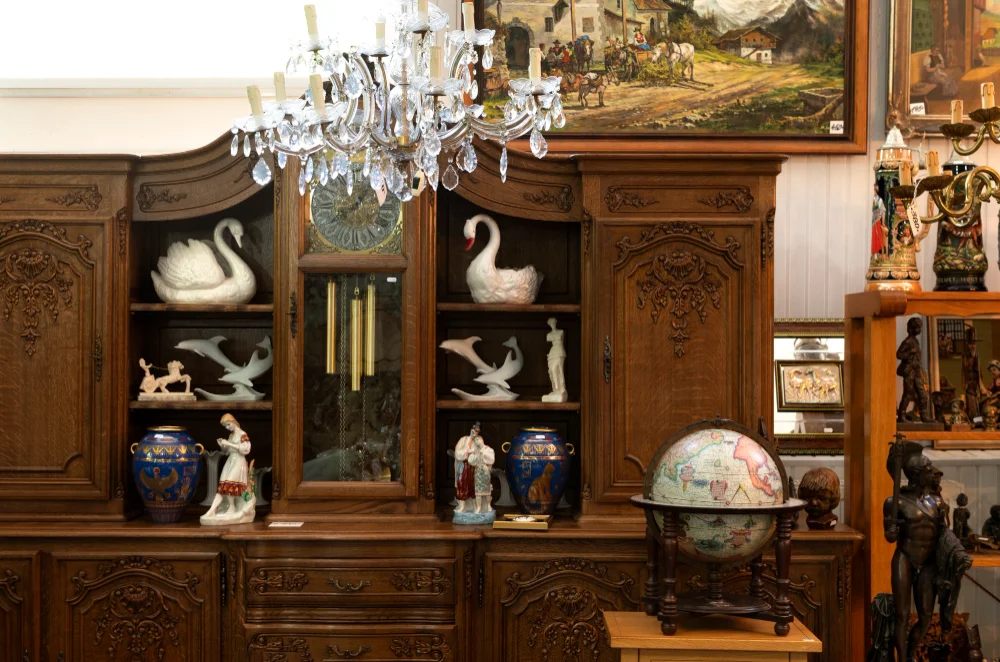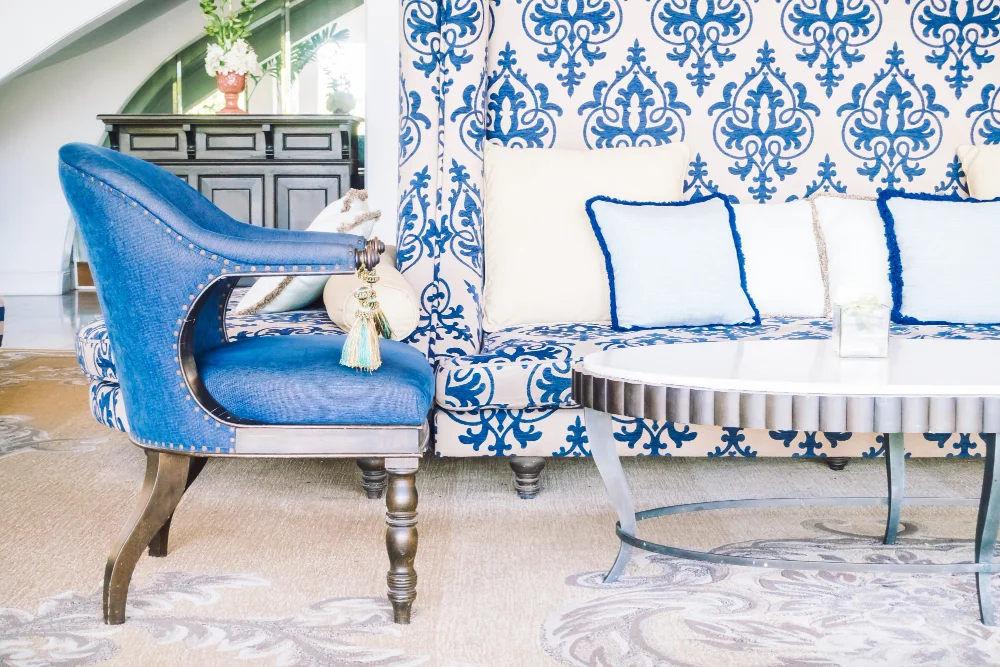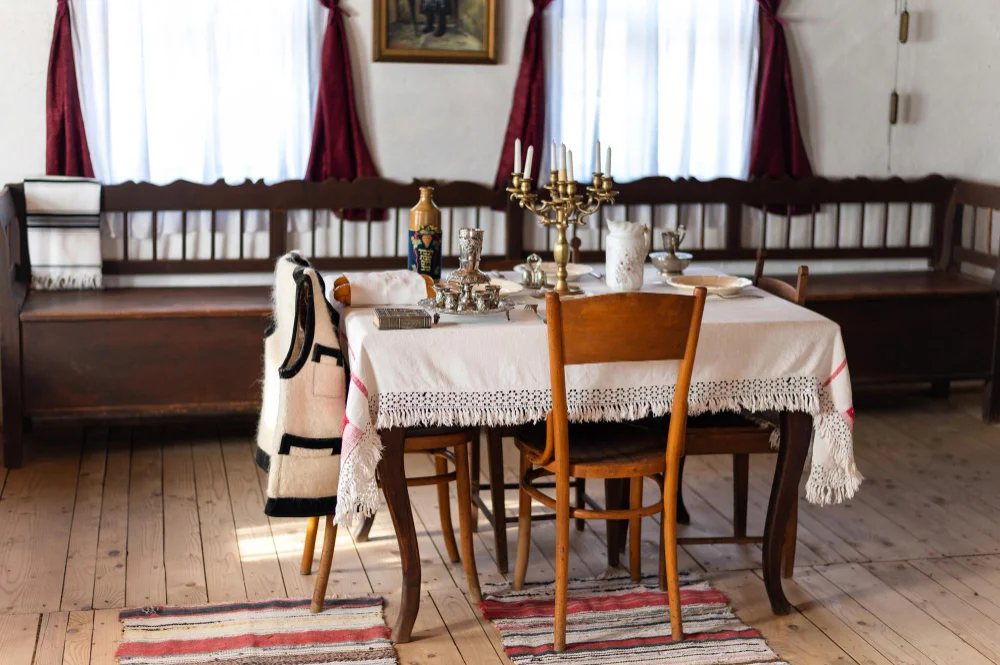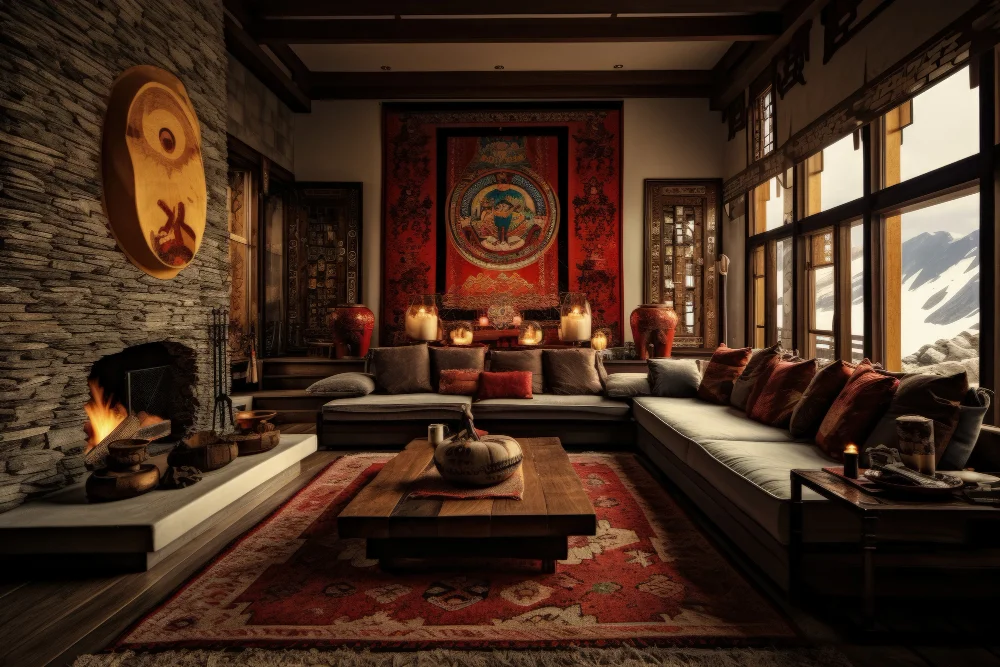Tudor style interior design brings the romantic essence of medieval England into the modern home. With exposed beams, warm wood tones, and dramatic architectural details, it offers a blend of coziness and grandeur.
Unlike minimalism, this style thrives on texture, craftsmanship, and storytelling. In this guide, you’ll discover how to adapt Tudor style interior design to fit contemporary spaces, creating homes that feel both historic and livable.
What Is a Tudor Style
Tudor style is an architectural and interior design tradition that originated in England during the late 15th century and continued into the early 17th century. It is known for its distinct half-timbering on exteriors, steeply pitched gable roofs, and tall, narrow windows with leaded glass.
Inside, Tudor style emphasizes warmth and craftsmanship through exposed wooden beams, grand fireplaces, carved paneling, and textured walls.
Unlike purely decorative trends, Tudor design was born from practicality, using strong natural materials to withstand time while reflecting the elegance of the era. Today, it has been adapted into interior design that blends historic charm with modern comfort.
Key Elements That Define Tudor Style Interior Design
The heart of Tudor-style interior design lies in its architectural features and material use. These timeless elements create an atmosphere that feels grounded in tradition yet flexible enough for modern interpretation.
Thick wooden beams line the ceilings, often left exposed to highlight craftsmanship. Walls are traditionally plastered in light tones, offering balance against dark wood panelling. Large stone fireplaces dominate living areas, acting as central gathering spots. Windows are small but distinct diamond-shaped panes framed with dark lead lines, sometimes accented with stained glass.
Even doorways add to the character, often with Tudor arches or soft curves. Textures matter here: rugs, tapestries, and carved wood add depth. Together, these features give Tudor interiors a distinct identity that feels both strong and inviting.
How to Introduce Tudor Aesthetics at Home

Bringing Tudor style into your home doesn’t mean replicating an old castle. Instead, you can merge historical features with modern comfort for balance.
Start with materials: oak, walnut, and chestnut work beautifully for beams and trim. Use plaster or stone on walls to break up the darkness of wood. In kitchens, panelled cabinetry paired with wrought iron handles adds subtle Tudor character. For living rooms, patterned rugs and carved wood accents tie the look together.
Lighting is also crucial. Sconces designed to mimic candlelight, chandeliers with ironwork, and warm-toned lamps make interiors glow with historic charm. Choosing earthy tones, forest green, muted burgundy, or golden ochre complements the Tudor palette without overwhelming the space.
Practical Steps to Try Tudor Style Interior Design
- Install exposed beams in one or two rooms instead of the whole house
- Combine plaster walls with panelled trim for balance
- Use wrought iron hardware on doors and cabinets
- Add terracotta or patterned tiles in transitional spaces
- Select furniture with rich upholstery and carved details
Color & Light Strategy in Tudor Style Interior Design
Color plays a defining role in Tudor design. Traditional spaces often leaned dark, but today’s homes need a more inviting palette. Warm neutrals such as cream, taupe, or soft gray form the base. Medium to dark walnut tones enrich the beams and furniture.
Accent colors like forest green or oxblood red add vibrancy without clashing. Metallic finishes aged brass, bronze, or wrought iron, reinforce authenticity.
To avoid gloominess, lighting is essential. Large mullioned windows bring daylight inside, while layered artificial lighting maintains a cozy glow. Candlestick-style sconces, pendant chandeliers, and warm lamp shades balance historical ambience with modern function.
Tips for Balancing Light and Dark
- Pair light plaster walls with dark wood trim
- Add reflective surfaces like mirrors or glass accents
- Use layered lighting to reduce heavy shadows
- Keep window treatments minimal to allow sunlight in
- Highlight architectural details with subtle spotlights
Designing Living Spaces in Tudor Style Interior Design

The great room is the soul of any Tudor home. Traditionally centred around a fireplace, it should radiate warmth and intimacy. Place carved wooden mantels or stone surrounds as focal points. Rugs with medieval patterns define seating areas. Upholstered sofas, leather armchairs, and low wooden tables reinforce coziness, much like the inviting interiors often featured in lifestyle hotel news.
Bedrooms, meanwhile, should feel like private retreats. Panelling behind the bed, canopy drapery, and richly colored textiles enhance intimacy. Heavy curtains not only add privacy but also mirror the historical mood. Soft, warm lighting creates a sense of sanctuary.
Libraries, studies, and entry halls can lean more ornamental. Floor-to-ceiling bookshelves, leaded glass windows, and carved staircases add grandeur. Decorative plaster ceilings or exposed joists keep the character authentic.
Common Mistakes to Avoid in Tudor Interiors
While Tudor interiors are rich in detail, overdoing them can spoil the effect. Adding too many medieval props swords, shields, or faux tapestries turns the space theatrical rather than authentic. Using only dark tones makes rooms feel oppressive, so lighter walls or brighter textiles are essential.
Ignoring lighting is another common mistake; even the richest Tudor details fall flat without layered illumination. Furniture choice matters too. Oversized or mismatched pieces disrupt proportions. Finally, remember that functionality must remain a priority. A Tudor-inspired home should feel livable, not like a museum.
Quick Don’ts
- Don’t overload rooms with heavy décor
- Avoid relying solely on dark wood
- Skip mismatched modern and medieval furniture
- Never ignore natural or artificial light
- Don’t sacrifice comfort for historical accuracy
Practical Tips for Starting Your Tudor Journey
Designing a Tudor-inspired home can feel overwhelming, but breaking it into steps simplifies the process. Begin with one room often the living room or entry hall, and let it set the tone. Once you’ve chosen wood finishes and wall treatments, layer in textiles, hardware, and lighting gradually.
Take a phased approach: start with architectural details, then introduce furniture and accents. This way, you avoid overspending and maintain flexibility. With time, your home evolves into a cohesive Tudor sanctuary.
Why Tudor Interiors Still Matter Today

Tudor interiors have survived centuries because they balance strength and warmth. Their appeal lies in the combination of craftsmanship, storytelling, and intimacy. For homeowners who crave depth over simplicity, Tudor style offers richness without sacrificing comfort.
Modern adaptations allow flexibility. You can mix Tudor beams with contemporary furniture or add Tudor arches to otherwise minimalistic spaces. The result is a design language that feels timeless, anchored in history, yet open to evolution.
Conclusion on Tudor Style Interior Design
Tudor style interior design offers a timeless balance of strength, warmth, and detail. By using wood, stone, iron, and rich textiles, you can create a home that feels both historic and modern.
The key is to restrain, blend historical elements with practical comfort, and let your rooms evolve naturally. Whether you start with a fireplace, a panelled wall, or decorative beams, this design style has the power to transform homes into enduring sanctuaries.
For real-world inspiration, you can even notice similar design touches in charming places like some of the restaurants in Safford, where traditional and modern aesthetics often meet.











